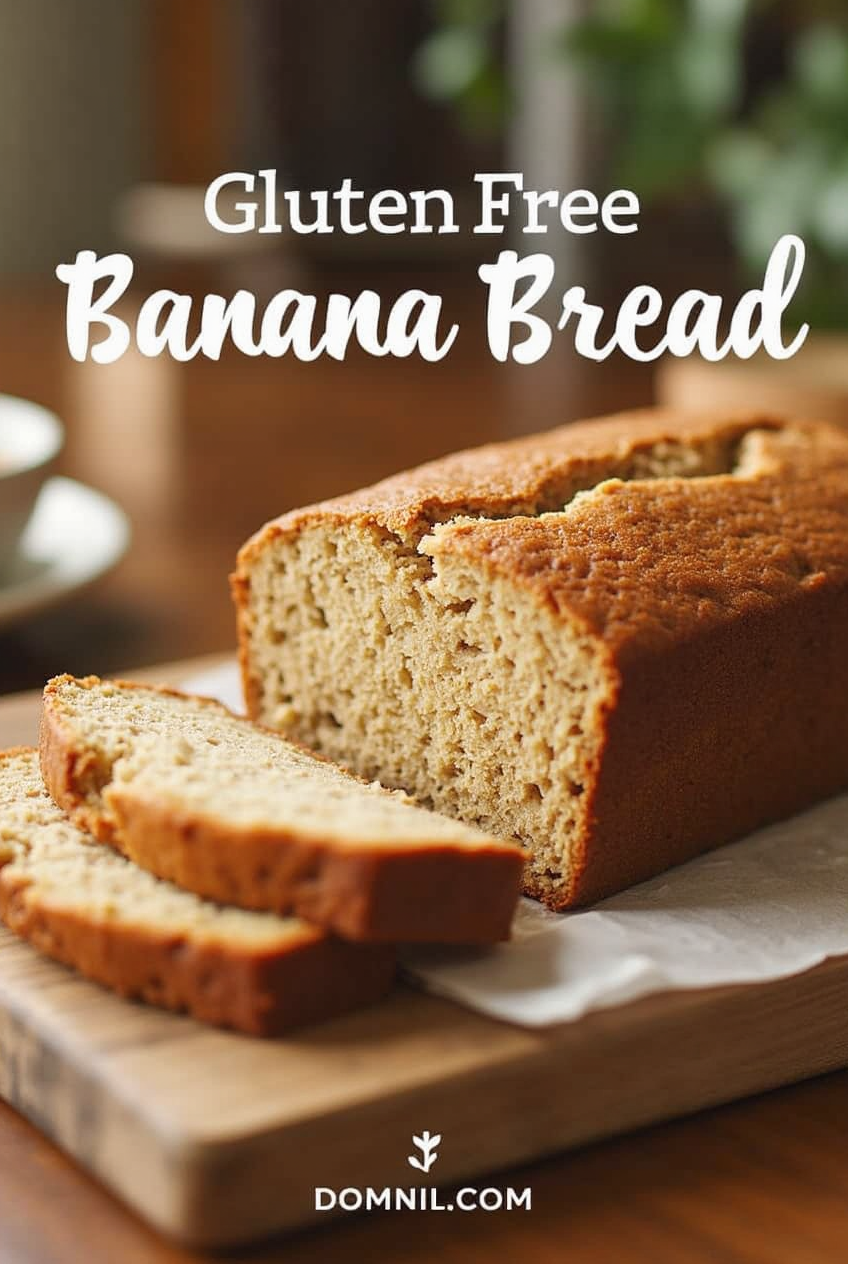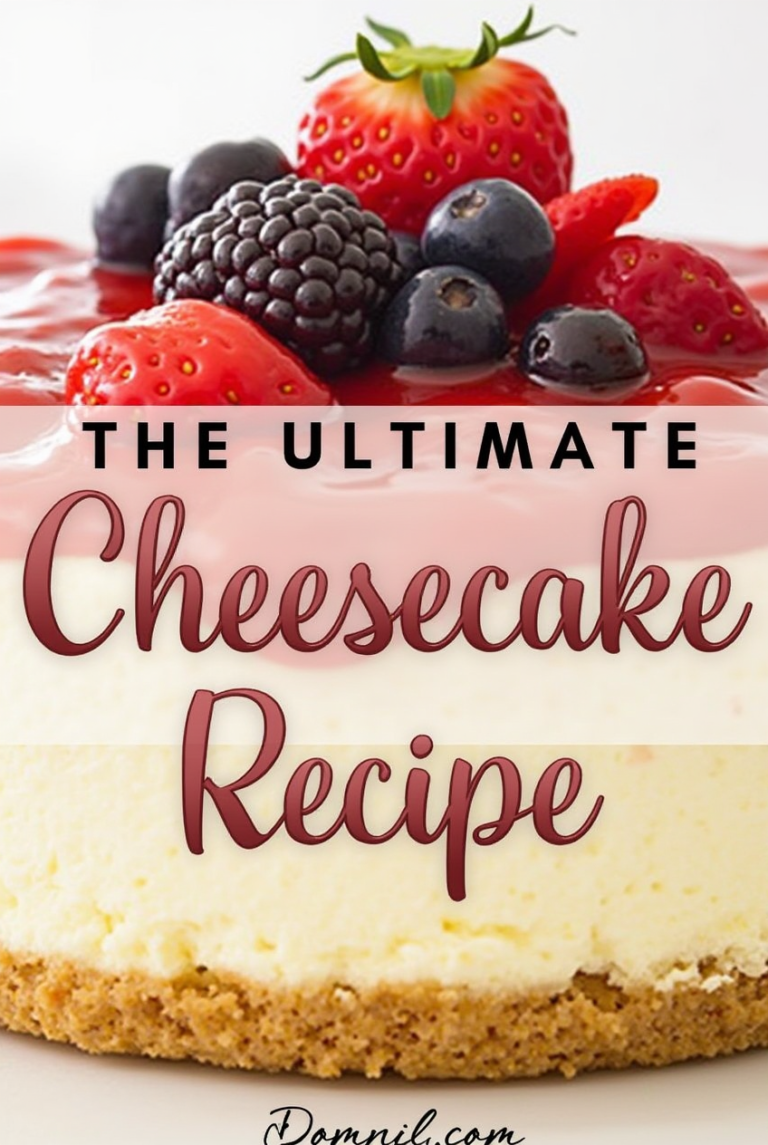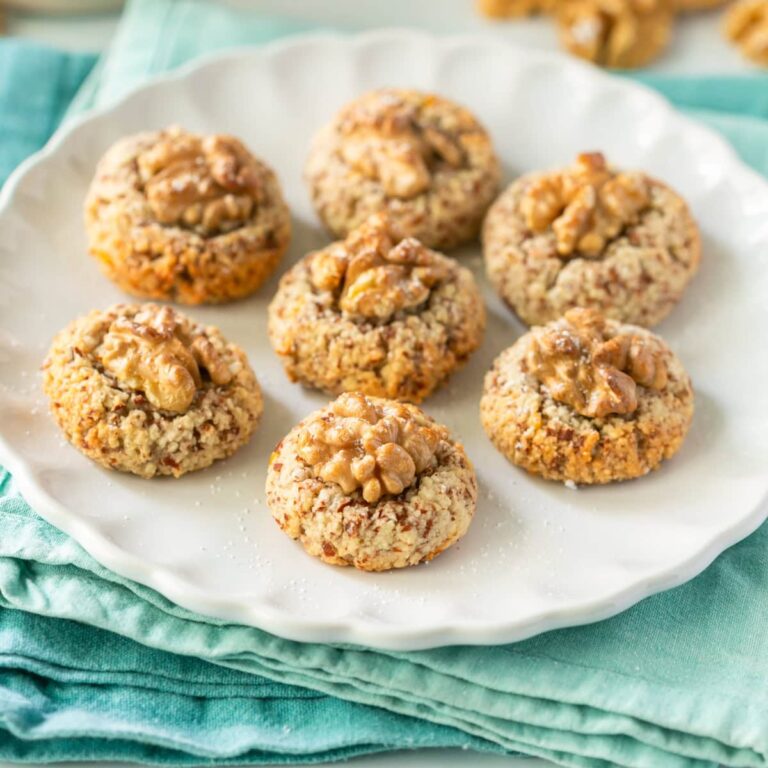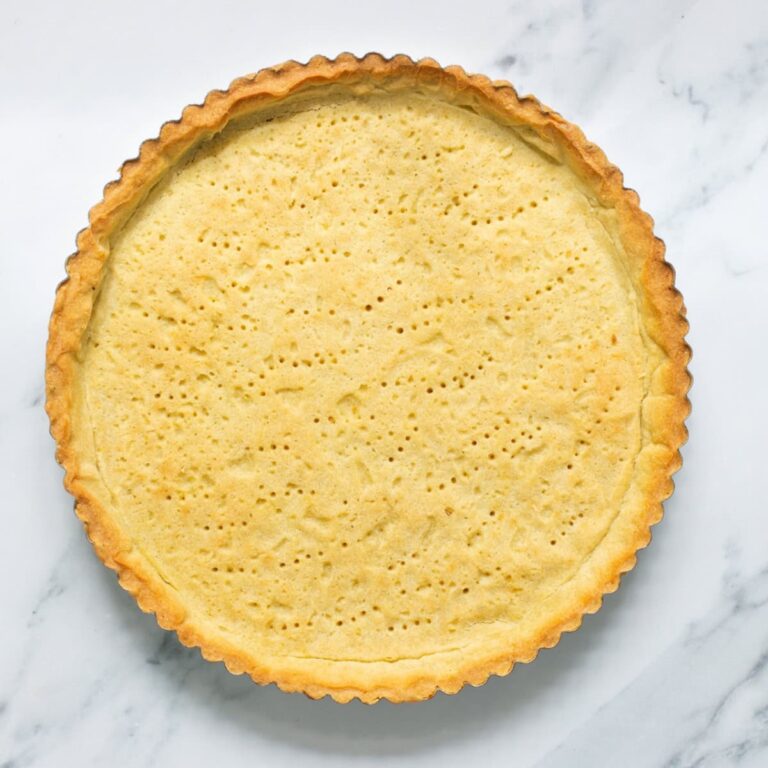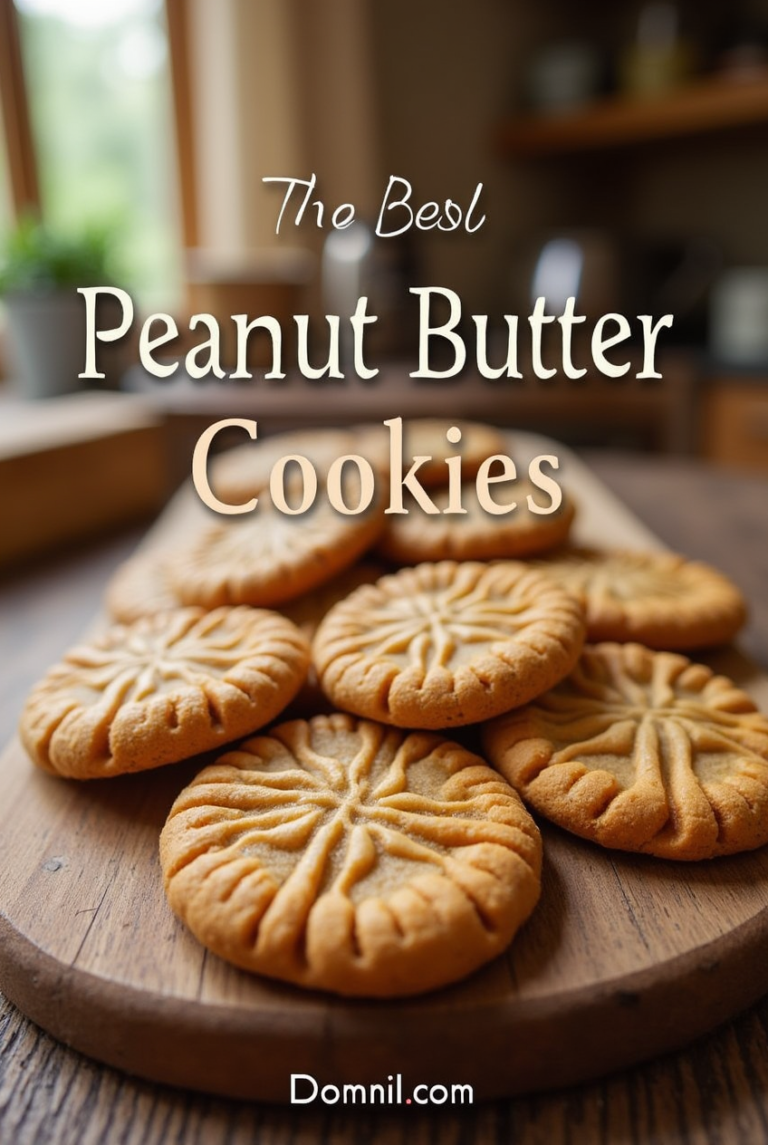The Ultimate Guide to GF Banana Bread (Gluten-Free Banana Bread)
Introduction to GF Banana Bread
Why Go Gluten-Free?
The gluten-free lifestyle has exploded in popularity in recent years—not just among those with Celiac disease, but also with people who are sensitive to gluten or simply want to feel better overall. Going gluten-free can help reduce bloating, improve digestion, and boost energy. But the best part? You don’t have to give up your favorite baked goods, like banana bread.
Banana bread is a household staple, often enjoyed with morning coffee or as a comforting evening snack. Traditionally made with wheat flour, it’s easy to think it’s off-limits for the gluten-intolerant. Thankfully, GF banana bread exists, and it’s just as delicious—if not more so. With the right ingredients and a few tweaks, you can whip up a loaf that’s soft, moist, and rich in banana flavor without a trace of gluten.
Whether you’re newly diagnosed, experimenting with a gluten-free lifestyle, or cooking for someone who is, understanding why gluten-free banana bread matters is the first step in your baking journey. It’s more than a trend—it’s about enjoying food that nourishes and satisfies without compromising health.

Table of Contents
Health Benefits of GF Banana Bread
Gluten-free banana bread isn’t just a workaround—it actually brings a bunch of health benefits to the table. First off, it’s easier on the digestive system, especially for people who deal with bloating, cramping, or fatigue after eating gluten.
But there’s more to love. When made with wholesome ingredients, GF banana bread can be lower in sugar, higher in fiber, and packed with potassium from those ripe bananas. Choose nutrient-rich flours like almond, oat, or coconut, and you’ve suddenly got a loaf that’s brimming with vitamins, minerals, and healthy fats.
You also get a decent dose of protein if you toss in extras like nuts, seeds, or a scoop of protein powder. And if you’re using natural sweeteners like honey or maple syrup instead of refined sugar, you’re making a treat that’s not only good for the taste buds but also supports blood sugar balance.
What’s even better? It’s allergy-friendly. By swapping out common allergens like wheat, dairy, or nuts, you can customize your banana bread to suit virtually any diet.
Key Ingredients in GF Banana Bread
Best Gluten-Free Flours to Use
When it comes to gluten-free baking, the flour is the game-changer. The right gluten-free flour can make or break your banana bread. Unlike traditional baking where all-purpose flour does all the work, gluten-free baking usually needs a mix of flours to mimic that soft, fluffy texture.
Here are some of the top choices:
- Almond Flour: Moist, nutty, and rich in protein. Great for adding structure.
- Oat Flour: Offers a mild flavor and soft crumb. Be sure it’s certified gluten-free.
- Coconut Flour: Absorbs a lot of moisture, so use sparingly. It’s great for dense, rich loaves.
- Rice Flour: Neutral flavor and light texture. Often used in blends.
- Gluten-Free All-Purpose Flour: The easiest option for beginners. Just make sure it has xanthan gum or guar gum for binding.
Pro tip: Always measure gluten-free flour by weight if possible. These flours absorb liquids differently and can be tricky in standard cup measurements.
Bananas: The Star Ingredient
Let’s be real—without bananas, banana bread would just be… bread. Bananas are more than just a flavor component; they give the loaf its moisture, natural sweetness, and that classic texture. The best bananas for baking? The overripe ones with brown speckles. They’re softer, sweeter, and blend beautifully into the batter.
Bananas are also packed with nutrients like potassium, vitamin B6, and fiber. In gluten-free baking, where you often miss the elasticity of gluten, bananas help create a smooth, cohesive batter. You can even use them as an egg substitute in vegan versions!
Mashing bananas evenly is key. Use a fork or potato masher, and aim for a smooth consistency without large chunks—unless you like a rustic texture.
Optional Add-Ins for Flavor and Texture
Want to elevate your GF banana bread from basic to bakery-worthy? Toss in some add-ins! These not only enhance the flavor but also give your bread a more satisfying texture. Here are some crowd-pleasers:
- Chocolate Chips: Classic and irresistible. Go dark for a healthier touch.
- Nuts: Walnuts or pecans add crunch and richness.
- Dried Fruit: Raisins, cranberries, or chopped dates bring sweetness and chewiness.
- Spices: Cinnamon, nutmeg, and even cardamom can create a warm, cozy vibe.
- Seeds: Chia or flaxseeds add a nutritional punch and a hint of crunch.
Keep in mind that add-ins can affect the moisture level and baking time, so make small adjustments as needed.
Step-by-Step Recipe for Perfect GF Banana Bread
Prep Time and Ingredients List
Before you start whipping up a loaf of GF banana bread, it’s important to gather everything you need. A well-prepped kitchen is the first step to success. Here’s what you’ll need:
Prep Time:
- Preparation: 15 minutes
- Bake Time: 50–60 minutes
- Total Time: Around 1 hour and 15 minutes
Ingredients:
- 3 large overripe bananas (mashed)
- 2 cups gluten-free all-purpose flour (with xanthan gum)
- 2 large eggs (or flax eggs for vegan option)
- 1/2 cup melted coconut oil or butter
- 1/2 cup coconut sugar or brown sugar
- 1 tsp vanilla extract
- 1 tsp baking soda
- 1/2 tsp baking powder
- 1/2 tsp salt
- 1 tsp cinnamon (optional)
- 1/4 cup almond milk or any non-dairy milk
Optional Add-Ins:
- 1/2 cup chocolate chips
- 1/2 cup chopped walnuts
- 2 tbsp flaxseeds or chia seeds
- Pinch of nutmeg for extra flavor
Having your ingredients at room temperature helps everything mix more evenly. Also, don’t skip on the banana ripeness—the riper, the better!
Mixing and Baking Instructions
Let’s get down to business. Follow this method to create a moist, flavorful GF banana bread that tastes like it came straight from a bakery:
- Preheat your oven to 350°F (175°C). Grease a 9×5-inch loaf pan or line it with parchment paper.
- Mash the bananas in a large mixing bowl until smooth. You can leave a few chunks if you like a more textured loaf.
- Add wet ingredients: Stir in the eggs, melted coconut oil, vanilla extract, and almond milk. Mix well until smooth.
- Combine dry ingredients: In a separate bowl, whisk together the gluten-free flour, baking soda, baking powder, salt, and cinnamon.
- Mix it all together: Gradually add the dry ingredients to the wet mixture. Stir just until combined—don’t overmix, or your bread could turn out dense.
- Fold in extras like chocolate chips, nuts, or seeds if you’re using them.
- Pour the batter into the prepared loaf pan and smooth out the top.
- Bake for 50–60 minutes, or until a toothpick inserted in the center comes out clean.
- Cool in the pan for about 10–15 minutes, then transfer to a wire rack to cool completely.
That’s it! You’ve just made a wholesome, gluten-free banana bread that’s bursting with flavor and perfect for any occasion.
Common Mistakes to Avoid
Even the best intentions can go awry in the kitchen. Here are some common banana bread mistakes—and how to dodge them like a pro:
- Using underripe bananas: They won’t have the sweetness or softness needed for the right texture.
- Overmixing the batter: This is a surefire way to end up with dense, chewy bread. Stir until just combined.
- Skipping the flour blend: Not all gluten-free flours work the same. Always choose a tested blend, preferably one with xanthan gum.
- Baking at the wrong temperature: A too-hot oven can burn the outside and leave the inside raw. Use an oven thermometer if possible.
- Cutting too soon: Let your bread cool completely before slicing—it continues to set as it cools, and slicing too early can ruin the texture.
Avoiding these pitfalls ensures your loaf is a fluffy, moist masterpiece every single time.
Tips for Making Moist and Flavorful GF Banana Bread
How to Keep It Moist Without Gluten
Moisture is the name of the game, especially when you’re baking without gluten. Gluten naturally traps moisture and gives baked goods their chewy, soft texture. Without it, you’ve got to be strategic.
Here’s how to nail it:
- Use extra bananas: Don’t skimp on the bananas—they’re your main moisture source.
- Fat is your friend: Coconut oil, avocado oil, or butter not only adds richness but locks in moisture.
- Add milk: Non-dairy milk like almond or oat can make the batter more fluid and help with softness.
- Don’t overbake: A few extra minutes in the oven can dry out your loaf. Always check around the 50-minute mark.
- Cover during baking: If your bread browns too quickly, loosely cover it with foil for the last 15 minutes.
Another great trick? Add a spoonful of Greek yogurt or applesauce to the batter. It ups the moisture and gives a smooth, velvety crumb.
Enhancing Flavor with Natural Sweeteners and Spices
Banana bread is naturally sweet, but that doesn’t mean you can’t level up its flavor. Using natural sweeteners and a dash of spice can transform a good loaf into a showstopper.
Sweeteners to consider:
- Maple syrup: Adds a deep, caramel-like sweetness.
- Honey: Brings floral notes and extra moisture.
- Coconut sugar: Low-glycemic and rich in flavor.
- Date paste: Natural and fiber-rich.
Spices to try:
- Cinnamon: The go-to for warmth and coziness.
- Nutmeg: Just a pinch for earthy undertones.
- Cardamom: Adds a sweet, floral twist.
- Allspice: Great for holiday vibes.
Add a teaspoon or two of your favorite spice blend, and you’ll be amazed at the difference. The flavor will sing, and the aroma while baking? Absolutely divine.

GF Banana Bread Variations
Vegan and Dairy-Free Options
If you’re avoiding more than just gluten, don’t worry—you can still have your banana bread and eat it too. A few simple swaps make it fully vegan and dairy-free without compromising flavor or texture.
Egg Substitutes:
- Flax eggs (1 tbsp ground flaxseed + 3 tbsp water per egg)
- Mashed banana (¼ cup = 1 egg)
- Chia eggs (same ratio as flax eggs)
Milk Replacements:
- Almond milk
- Coconut milk
- Oat milk
- Soy milk
Butter Alternatives:
- Coconut oil
- Vegan butter spreads
- Olive oil (in small amounts for a Mediterranean twist)
These swaps are foolproof and still result in a soft, moist loaf. Plus, your vegan friends will thank you.
Chocolate Chip GF Banana Bread
This one’s a total crowd-pleaser. Chocolate and banana are best friends—when they come together in gluten-free banana bread, it’s a match made in heaven.
How to do it:
- Add ½ to ¾ cup of chocolate chips to your batter before baking.
- Dark chocolate chips melt beautifully and add a rich, intense flavor.
- For extra indulgence, sprinkle a few more chips on top before popping the loaf into the oven.
Want to make it triple chocolate? Add 1 tbsp of unsweetened cocoa powder to the batter for a brownie-like twist.
Nut-Free GF Banana Bread for Allergies
For those with nut allergies, making GF banana bread can be tricky—but definitely not impossible. Skip the almond flour, and avoid add-ins like walnuts or pecans.
Here’s how to keep it nut-free:
- Use gluten-free oat flour or sorghum flour as your base.
- Choose sunflower seed butter or coconut oil instead of nut-based fats.
- Stick to nut-free milk like rice or oat milk.
These adjustments still yield a tender, flavorful loaf that’s safe for everyone, including kids with peanut or tree nut allergies.
Storing and Freezing GF Banana Bread
Best Ways to Store Fresh Banana Bread
You’ve baked the perfect loaf—now what? If you want your gluten-free banana bread to stay fresh and moist for as long as possible, storing it properly is key. Because GF baked goods tend to dry out faster than traditional ones, a little care goes a long way.
Here are the best storage tips:
- Cool completely before storing. Trapping heat can cause condensation and lead to soggy bread or mold growth.
- Use airtight containers. A plastic or glass container with a tight seal keeps out air and preserves moisture.
- Store at room temperature if eating within 2–3 days. Keep the container in a cool, dry place.
- Wrap in parchment or wax paper first, then place in a zip-top bag or container. This adds a layer of protection and reduces direct contact with plastic, which can make the bread soggy.
Avoid refrigerating your bread unless absolutely necessary—it often dries out faster in the fridge. If you must, wrap it tightly in plastic wrap to lock in moisture.
How to Freeze and Thaw Properly
Want to extend the shelf life of your banana bread? Freezing is your best bet. And yes, gluten-free banana bread freezes beautifully when done right.
Freezing Instructions:
- Cool the bread completely. Never freeze a warm loaf—it’ll develop ice crystals and ruin the texture.
- Wrap tightly in plastic wrap or aluminum foil.
- Place in a freezer-safe bag or container. Label with the date.
- Freeze for up to 3 months.
To thaw:
- Let the loaf or slices sit at room temperature for a few hours.
- For quicker results, microwave individual slices for 20–30 seconds.
- You can also toast it straight from the freezer—perfect for a warm breakfast!
Whether it’s for meal prep or just to have a sweet treat ready when cravings hit, freezing is a total game-changer.
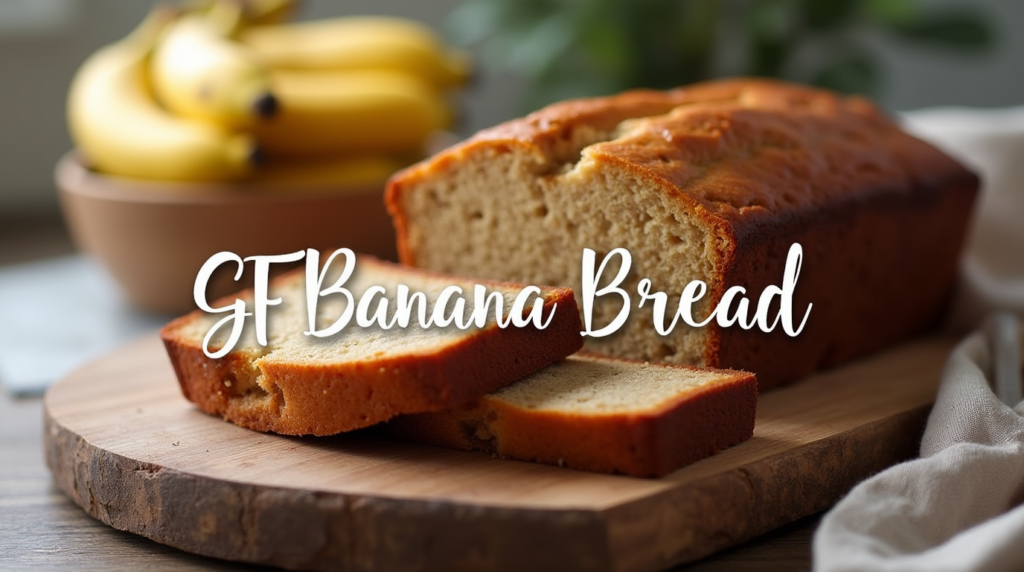
Serving Suggestions
Breakfast Ideas
Banana bread and breakfast are a match made in cozy, carb-loving heaven. And GF banana bread is no exception. It’s satisfying, slightly sweet, and pairs beautifully with your morning favorites.
Here are a few ways to enjoy it:
- Toasted with butter or dairy-free spread.
- Topped with nut butter (almond, peanut, or sunflower).
- Served with Greek yogurt and fresh fruit for a protein-packed combo.
- Sliced thinly and used as a base for breakfast “toast” topped with berries, seeds, or even avocado.
You can also transform leftover banana bread into French toast! Just dip slices in a mix of egg and milk, then fry in a skillet for a golden, crispy outside and soft, warm inside.
Dessert or Snack Pairings
Banana bread isn’t just for mornings—it makes a delicious midday snack or guilt-free dessert.
Ideas for sweet pairings:
- With a scoop of vanilla ice cream for a warm-and-cold contrast.
- Drizzled with dark chocolate or caramel sauce.
- Paired with coffee or tea for an afternoon pick-me-up.
- Served with a dollop of whipped coconut cream for a light and dairy-free dessert.
Try making banana bread sandwiches by spreading cream cheese or frosting between two slices. It’s indulgent, fun, and totally customizable.
Whether you like it plain or dressed up, there’s no wrong way to enjoy this gluten-free goodness.
Nutritional Information
Macronutrients Breakdown
Let’s talk numbers. While nutritional info will vary depending on the ingredients and add-ins you use, here’s a general idea of what one slice (about 1/10th of a loaf) of basic GF banana bread might look like:
| Nutrient | Amount per Slice |
|---|---|
| Calories | 180–220 |
| Protein | 3–5g |
| Fat | 7–10g |
| Carbohydrates | 25–30g |
| Sugars | 10–14g |
| Fiber | 2–4g |
This loaf is a solid energy booster, thanks to the combo of healthy carbs, natural sugars, and fats. Choose whole grain GF flours and healthy sweeteners, and your banana bread can even make the cut as a nutrient-rich snack or breakfast.
Calories Per Slice
The calorie count depends heavily on what’s in your loaf. Basic GF banana bread without add-ins usually sits around 180–200 calories per slice. Add chocolate chips, nuts, or extra sweeteners, and that can easily climb to 250+.
Tips for reducing calories without losing flavor:
- Use unsweetened applesauce instead of part of the oil or sugar.
- Choose a zero-calorie sweetener like monk fruit or stevia.
- Cut back on mix-ins or use them sparingly.
Being mindful of your ingredients allows you to enjoy banana bread without worrying about the extra guilt.
Frequently Asked Questions About GF Banana Bread
Can I Substitute Regular Flour?
Technically, yes—but then it wouldn’t be gluten-free banana bread anymore. If you’re aiming to stay gluten-free, you need to use a certified GF flour. But if you’re just trying the recipe and don’t have dietary restrictions, an all-purpose flour can work as a 1:1 replacement (just skip the xanthan gum if your mix already includes it).
Just be aware that gluten adds structure, so the texture may be different.
How Ripe Should Bananas Be?
The best bananas for banana bread are those you’d never eat raw—super ripe, soft, and heavily speckled or even mostly black. The riper they are, the sweeter your bread will be. They mash easier, blend into the batter better, and offer that deep banana flavor you’re craving.
If your bananas aren’t ripe yet, try this quick hack: bake them at 300°F (150°C) for 10–15 minutes until the skins darken. Let them cool, peel, and mash. Instant ripeness!
The History and Popularity of Banana Bread
Origins of Banana Bread
Believe it or not, banana bread has been around for nearly a century. It first popped up in American cookbooks during the Great Depression. People wanted to avoid waste, and what better way to use up overripe bananas than baking them into a loaf of sweet, comforting bread?
Early versions were made with basic pantry staples, and as baking powder and baking soda became more common, banana bread recipes became easier and more reliable.
Rise of the Gluten-Free Version
Fast-forward to the 2000s and beyond: gluten intolerance and Celiac disease awareness are rising, and so is demand for gluten-free alternatives. Enter GF banana bread—a version that’s just as delicious, if not more.
With the growing popularity of alternative diets like Paleo, Whole30, and veganism, the gluten-free banana bread movement has gone from niche to mainstream. Today, it’s easy to find recipes, products, and pre-made loaves that cater to this demand, proving that dietary restrictions don’t have to mean flavor sacrifices.
Benefits of Baking GF Banana Bread at Home
Control Over Ingredients
When you bake GF banana bread at home, you’re in charge—and that’s a big deal. Store-bought banana bread, even the ones labeled gluten-free, often contains preservatives, artificial flavors, and loads of added sugar. Baking it yourself means you get to decide what goes in—and what stays out.
You can:
- Use organic bananas and other clean ingredients.
- Choose healthier sweeteners like honey or maple syrup.
- Adjust the amount of sugar to your taste.
- Avoid allergens like dairy, soy, or nuts.
- Add extra nutrients like chia seeds, flaxseeds, or protein powder.
Plus, you can make it vegan, low-sugar, high-fiber, or nut-free based on your household’s needs. No label-reading marathon required.
It’s a win-win. You enjoy fresher flavor and peace of mind knowing you’re feeding yourself or your family something wholesome.
Cost-Effectiveness
Let’s talk dollars and cents. Buying specialty gluten-free baked goods can get expensive fast. A single loaf of GF banana bread from a health food store might run you anywhere from $6 to $10. And that’s if you’re lucky.
Baking at home is a serious money-saver. Most of the ingredients are pantry staples—bananas, eggs, flour, oil—and buying gluten-free flour in bulk makes it even more economical. You can make two or three loaves for the price of one store-bought option.
And don’t forget the satisfaction factor. There’s something deeply rewarding about pulling a warm, golden loaf from your own oven. It smells like comfort and tastes like success.
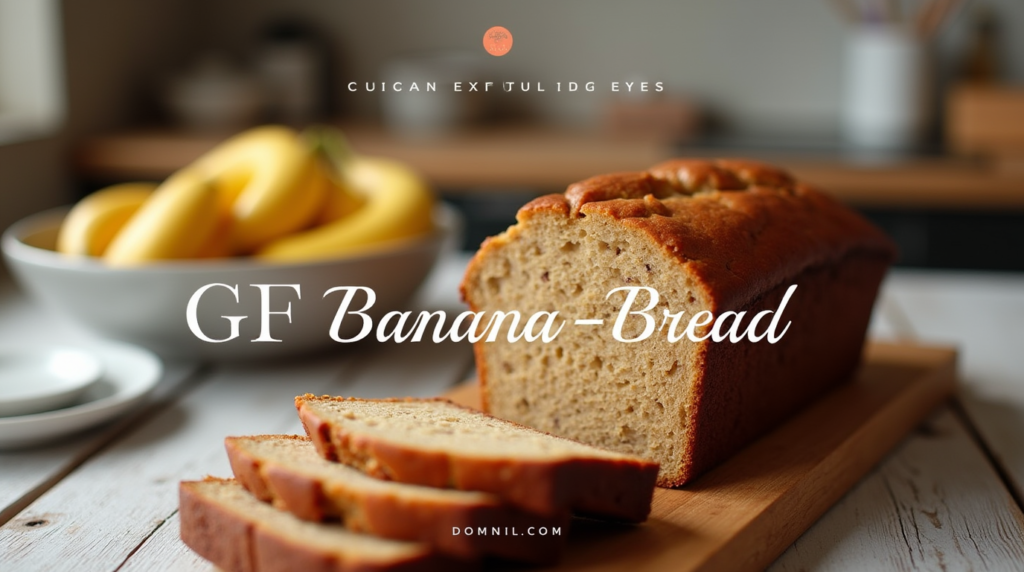
Troubleshooting Guide
Why Is My Banana Bread Too Dense?
A dense loaf is one of the most common issues in GF baking. But don’t worry—there are ways to fix it.
Here’s what might be going wrong:
- Overmixing the batter. Stirring too much develops gummy textures, even without gluten.
- Too much banana. Believe it or not, overdoing the bananas can make it heavy and wet.
- Lack of leavening. Baking soda and baking powder need to be fresh and correctly measured.
- Incorrect flour blend. Some flours lack the structure needed for a good rise.
Solutions:
- Mix gently and stop as soon as everything’s combined.
- Stick to 3 medium bananas—no more.
- Use a tested GF flour blend with xanthan gum.
- Let the batter sit for 5–10 minutes before baking to hydrate the flour.
What If It’s Too Dry or Gummy?
Dry or gummy textures are frustrating, but totally fixable.
For dry bread:
- You might be baking too long. Check your oven temperature with a thermometer.
- You could be using too much flour. Always measure GF flours by weight when possible.
- Lack of fat (oil or butter) can also cause dryness.
For gummy bread:
- Often caused by undercooking or too much moisture (from bananas or milk).
- Letting the bread cool completely before slicing helps it set properly.
- If it’s still gummy after cooling, try reducing your banana or liquid quantity next time.
Troubleshooting is part of the learning curve. Keep notes, tweak little by little, and you’ll soon have a go-to recipe you can bake in your sleep.
Reader-Approved GF Banana Bread Recipe (Bonus)
What Makes This Recipe Special?
This version is a fan favorite. It’s ultra-moist, naturally sweetened, and easy to make—all while being 100% gluten-free and optionally dairy-free or vegan.
Here’s the recipe:
Ingredients:
- 3 very ripe bananas
- 2 large eggs (or 2 flax eggs)
- 1/2 cup maple syrup or honey
- 1/4 cup coconut oil (melted)
- 1 tsp vanilla extract
- 2 cups almond flour
- 1/2 cup gluten-free oat flour
- 1 tsp baking soda
- 1/2 tsp salt
- 1/2 tsp cinnamon
- 1/3 cup dark chocolate chips (optional)
Instructions:
- Preheat oven to 350°F (175°C). Grease or line a loaf pan.
- In a large bowl, mash the bananas.
- Add eggs, maple syrup, oil, and vanilla. Stir until smooth.
- Add flours, baking soda, salt, and cinnamon. Mix until just combined.
- Fold in chocolate chips if using.
- Pour into the loaf pan and smooth the top.
- Bake for 50–60 minutes or until a toothpick comes out clean.
- Let cool before slicing.
Perfect for breakfast, dessert, or freezing for later.
Tools Necessary to Prepare GF Banana Bread:
To make delicious gluten-free banana bread, you don’t need a fancy kitchen setup. Here’s a list of basic tools you’ll need:
- Mixing Bowls – One large for wet ingredients, one medium for dry.
- Measuring Cups & Spoons – Essential for precise measurements.
- Loaf Pan – A 9×5-inch loaf pan works best for most recipes.
- Whisk or Spoon – For mixing ingredients evenly.
- Rubber Spatula – Great for scraping batter from the bowl.
- Potato Masher or Fork – For mashing ripe bananas smoothly.
- Toothpick or Cake Tester – To check if your banana bread is fully baked.
- Parchment Paper (optional) – Helps prevent sticking in the loaf pan.
- Wire Cooling Rack – For proper air circulation as the bread cools.
- Oven Thermometer (optional) – Ensures accurate baking temperature.
Real Feedback from Home Bakers
- “This was the best GF banana bread I’ve ever made! So moist and flavorful.”
- “Love that it’s naturally sweetened. I added walnuts and it came out amazing.”
- “I doubled the recipe and froze one loaf—still tastes great after thawing!”
Give it a try and make it your own!
Conclusion
Gluten-free banana bread is more than just a diet-friendly alternative—it’s a delicious, nourishing treat that fits into just about any lifestyle. Whether you’re avoiding gluten due to health reasons, exploring new dietary habits, or simply trying something different, this bread delivers big on taste, texture, and comfort.
From choosing the right ingredients to mastering moisture and flavor, we’ve covered everything you need to become a GF banana bread pro. Plus, with all the variations and customization options, you’ll never get bored baking this staple.
So grab those overripe bananas and get baking. Your kitchen (and your taste buds) will thank you.
FAQs
Q1: Can I use coconut flour alone for this recipe?
A1: Coconut flour is extremely absorbent and usually needs to be mixed with other flours. Using it alone may result in a dry, crumbly loaf.
Q2: How long does homemade GF banana bread last?
A2: Stored properly at room temperature, it lasts 3–4 days. In the fridge, up to a week. Frozen, it can last up to 3 months.
Q3: Can I make muffins instead of a loaf?
A3: Absolutely! Just reduce the baking time to 20–25 minutes and use a muffin tin with liners.
Q4: Is GF banana bread healthier than regular banana bread?
A4: It can be! Especially if you use nutrient-rich flours, natural sweeteners, and healthy fats.
Q5: Can I use frozen bananas?
A5: Yes! Just thaw them completely and drain any excess liquid before mashing.

